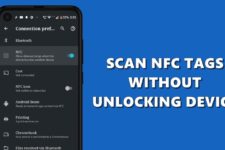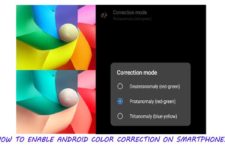
This monsoon comes with surprises for the Android world and so is today for the Optimus One family. Last year an esteemed Optimus One user “Tassadar” initiated an idea for multi-booting our beloved P500 into different ROMs. This Multi-ROM app allowed you to boot two ROMs but it required a common kernel to support both the ROMS. using the Multi-ROM Manager, you can multi-boot your LG Optimus One P500.
This feature limited the app to multi-boot two ROMs with different kernels like booting ICS and GB, since both have different kernel tree.
But this is not an issue anymore, as a newly inspired user arnab321 modified this specific app and indulged the capability to boot two different ROMs with different kernels. This seems to be a piece of huge news for those who already loved this app (mod).
Features of Multi-ROM Manager
1. ROM Switching: The app has a unique feature to change kernel, as in by backing up the boot.img and flashing them. (The flashing takes least time, about 1 min for GB based ROMs and maybe a little more for ICS/JB based ROM)
2. ROM Zip Modder: This feature is for the ease of the users, so now you just have to select the zip you want to flash to SD-Ext and this app will amend the updater-script and make it directly flashable to your SD-Ext. Also, the modified ROM.zip will have the Multi-ROM embedded, so there won’t be any need to install it again)
Limitations, that must be kept in mind:
1. ROMs must be for the same baseband.
2. It will be slower than the internal memory. (However, if you have a high-class memory card, it shall be as fast as the internal memory ROM)
Requirements for using this mod and the app:
1. Ext4/Ext2/Ext3 partition on SDcard big enough to hold all files from /system and /data, which is from 170mb to 400mb (depends on ROM and apps installed), so I think 512mb partition is minimum (if its 90% or so free).
2. Modified recovery (AmonRA and CWM available)
3. A kernel with ext2/3/4 support
Download Multi-ROM Manager
Instructions to Use Multi-ROM Manager
1. Guess you already have an ext partition on sdcard. (else create it from recovery, GParted, or any partitioning software). A typical ROM takes about 200-250mb if you keep minimal apps.
2. I also assume that you have Multi-ROM (not this app) installed. Else simply use the app’s “check for updates” to install Multi-ROM. (Or maybe download the flashable zip from tasssadar.github.com )
3. backup your current boot image with the app. (I’m calling this backup as rom1.img)
4. Steps to flash a new ROM to sdcard:
- Use the “prepare zip” menu of the app, choose the ROM zip you want to flash on sdcard. (Sense ROMs will not work)
- It will take some time as it extracts, modifies and repacks the zip. When the preview of the updater script is shown, just press “save”.
- After the progress bar completes, you will see the “embedding Multi-ROM” screen. If you are a first time user and see a prompt about choosing Multi-ROM.zip before that screen, just choose “download from the internet”.
- At the “choose boot location” prompt, select “sdcard”.
- The boot image of the Rom will be stored as “tmp_boot.img” (all boot image backups are stored in /sdcard/multirom/). Just rename it to something meaningful with a file manager. Let’s say I renamed it to Rom2.omg. You will need this to boot into the ROM later.
- Go to recovery and flash the zip. (The modded zip will have the prefix “mrom-“).
- Reboot. Your Rom in sdcard should boot now.
5. Switching Roms:
- To switch to Rom on the internal memory, go to “backup/restore boot image” on the app, select rom1.omg, choose “internal memory” and reboot.
- To switch to ROM on sdcard, do the same thing with rom2.img and choose “sdcard”.
Read Next: Android RAM Management Tips and Tricks


Join The Discussion: